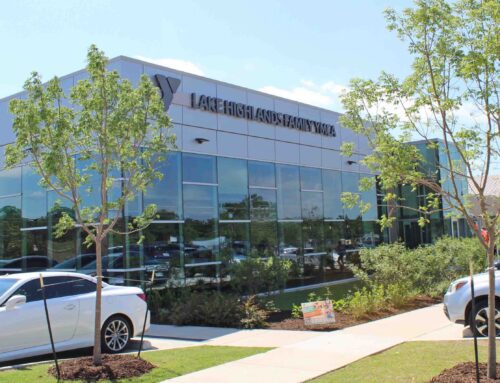There’s no real reason for Reunion Arena to be on the political horizon right now — it has been languishing for years, thanks to the city’s agreement giving the people running American Airlines Center first dibs on most events in Dallas. But there it is on today’s council economic development committee, which appears prepared to close the arena, demolish it (to the tune of $5 million) and then find an immediate buyer for the then-vacant land.
The rush to judgment made no sense to me, as I’ve written before — after all, the arena apparently bleeds about $1 million a year, which is chump change downtown, and you never know when casino gambling may be approved in Austin. So again, what’s up with this rush to get the arena closed and torn down?
Well, today in the DMN, buried near the end of the story, I see what’s going on: Apparently, if the city closes Reunion, it can declare the facility "surplus property", which triggers yet another city agreement — this one with Woodbine Development, a subsidiary of Hunt Corp., which if I’m not mistaken owns the downtown Hyatt next door to Reunion — allowing Woodbine 60 days to purchase the Reunion property, creating a monstrous amount of land right next door to the convention center (which wraps around I-30 to nearly connect with the Hyatt) and within walking distance of the new taxpayer-subsidized convention center hotel. Talk about an economic bonanza for Woodbine, all thanks to the city of Dallas and its benevolent taxpayers.

No price was established in this agreement between Woodbine and the city, so it apparently sets up another case of a private real estate company, well steeped in market knowledge, negotiating with city bureaucrats — I wonder who will come out on the short end of that stick?
Typically, here’s the way a master-planned real estate development like this one works — a la Victory Park, for example: A developer invests a huge chunk of money in a centerpiece development (such as the AAC building), using that investment as a catalyst to encourage other developers to bid up the pricing on the remaining parcels of available land, carefully positioned around the centerpiece development. And that remaining available land increases in value, hopefully exponentially, as a result of the intelligent development of the centerpiece, creating more demand for development on the limited amount of land still available in the project. This way, the original developer has "primed the pump", so to speak, using the original investment to drive remaining property values up. It has worked beautifully for the Perot and Hicks companies at Victory: The AAC development brought crowds to the area, which then began to see residential development, a hotel, office and a bunch of restaurant/retail opened up — all on land owned by the original AAC developers. The city gave those guys $100 million to prime the pump, and they did — all on their land. We helped them make a small fortune on that deal.
Now let’s look at the Reunion deal and how it ties in with that other rush-to-judgment project, the convention center hotel: Here, just down the street, a major developer and downtown landowner is prepared to spend more than $500 million on a centerpiece project that is single-handedly going to revitalize both the convention center and that part of downtown. And lo and behold, this major landowner — by priming the pump in that part of downtown — is all set to benefit from the increased demand for land/facilities created by the construction of the new taxpayer-subsidized convention center hotel. People like Perot and Hicks, who know their real estate, would sit back and wait for the demand to come to them; once the convention center hotel has been built, we’ll have so much activity going on around the convention center that development will be everywhere — or so we’ve been told by our real estate experts, Mayor Tom Leppert and most of the city council. So if this was their project, Perot and Hicks would sit on their remaining land and wait for the highest bidder.
But when the city is the major developer pumping all of the money into that part of town, looks what Leppert wants to do: "You can throw good money after bad," he told the News. "But there is a significant benefit to clearing the site. It will increase interest in the property." In other words, let’s get rid of this property now — before we’ve invested $500 million down the street and before it gets a chance to appreciate exponentially because of that investment — and let’s sell it to Woodbine, good friends of mine who already has a first-right of refusal to buy the property today, at what will undoubtedly be a below-future-market price.
Make sense? It does if your goal is to privatize all of the city’s available landholdings in the area of downtown where you plan to invest an enormous amount of money. Rather than let the city earn the profits from our investment, let’s let Woodbine have all of the appreciation, presumably after we tear down the arena for them, too.
This is Real Estate 101, a class the mayor and much of the council must not have taken in college. But you can bet Woodbine’s executives did. We can’t even blame them for fleecing us this time; we’re walking into this deal with our eyes open and our wallet extended.





